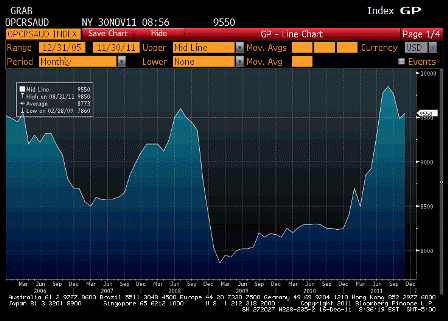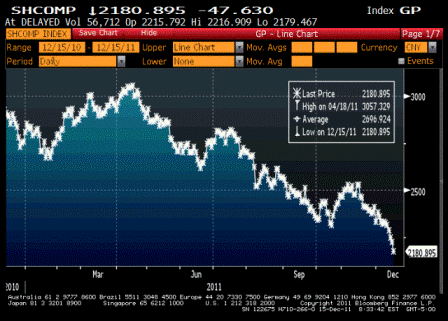As expected, it’s all about fiscal responsibility which they believe is the cure for their funding issues.
Their actual economic problem is a shortage of aggregate demand and their response continues to be measures to reduce
aggregate demand further.
All efforts are focused on funding being conditional on further austerity.
As previously suggested, it’s better thought of as the Sarcophagus plan:
The letter attached signed by Sarkozy and Merkel appears to contain the details of the new measures addressed to EU President Herman van Rompuy.
“Mr President,
To overcome the current crisis, all necessary measures to stabilize the euro area
as a whole will have to be taken. We are confident that we will succeed.
We are convinced that we need to reinforce the architecture of Economic and
Monetary Union going beyond the indispensable measures which are urgently
needed to cope with immediate crisis resolution. Those steps need to be taken
now without further delay. We consider this as a matter of necessity, credibility and
confidence in the future of Economic and Monetary Union.
The current crisis has uncovered the deficiencies in the construction of EMU
mercilessly. We need to remedy those deficiencies. To build a lasting Stability and
Growth Union which allows us to preserve our unique European model combining
economic success and social responsibility, we have to substantially reinforce
the foundations of EMU. Alongside the single currency, a strong economic pillar
is indispensable, building on enhanced governance to foster fiscal discipline as
well as stronger growth and enhanced competitiveness. In order to achieve these
objectives, we need a renewed contract between the Euro area Member States.
This conviction is the driving-force behind our proposal.
We need more binding and more ambitious rules and commitments for the Euro
area Member States. They should reflect that sharing a single currency means
sharing responsibility for the Euro area as a whole. They should pave the way for
a new quality of cooperation and integration within the Euro area.
We propose that those new rules and commitments should be enshrined in the
European Treaties as. Alternatively , the Member States whose currency is the
Euro will have to go ahead. In that case, we would ensure that those Member
States willing and able to do so would be able to join and the European institutions
would play an important role. We would also work towards bringing this new
agreement into the framework of the European Union as soon as possible.
The main building blocks of the new Stability and Growth Union are:
A strengthened institutional architecture
Euro area governance needs to be substantially reinforced. We should provide for
a more integrated and more efficient institutional set-up without duplicating existing
European structures or institutions. This set-up should be based on:
•Regular summits – at least twice a year – of the Euro area heads of State
and Government with a permanent president. These summits will provide
strategic orientations on the economic and fiscal policies in the euro area.
The impact of our domestic economic and fiscal policies on the euro area
should be considered as a matter of common interest, while safeguarding
national responsibility.
• During the crisis, the Eurosummit should meet on a monthly basis: each
meeting should focus on a precise agenda regarding governance and
policies to foster growth, competitiveness and fiscal stability. Member
States having signed the Euro Plus Pact will be invited to participate to the
discussions on issues related to it.
• A ministerial Eurogroup and a reinforced preparatory structure to prepare
and implement the decisions taken by the summit and ensuring the current
functioning.
This framework will be fully consistent with the EU institutional architecture. We
strongly reaffirm our willingness to fully associate the European Commission.
The European Parliament and national Parliaments should also be involved in an
adequate way.
A comprehensive framework of prevention
It is undoubtedly in the interest of all members of the Stability and Growth Union to
detect and correct departures from sound economic and fiscal policies long before
they become a threat to the stability of the Euro area as a whole. Therefore, we
need a comprehensive framework on prevention consisting of strengthened co-
ordination, surveillance and enforcement as well as positive incentives, building
on current arrangements (new macroeconomic imbalances procedure, EU 2020-
Strategy, Euro Plus Pact, a greater focus of structural- and cohesion funds on
competitiveness etc.) and developing them further.
This framework should comprise in particular:
the adoption by each euro area member state of rules on a balanced
budget translating the objectives and requirements of the Stability and
Growth Pact into national legislation at constitutional or equivalent level.
A new legal provison should set minimum requirements for the national
rules on balanced budgets. The European Court of Justice, on request of
the European Commission or a Euro area Member State, should have the
possibility to verify the transposition in the national legislation.
–
Commitment of national Parliaments to take into account recommendations
adopted at the European level on the conduct of economic and budgetary
policies.
–
We need to foster growth through greater competitiveness as well as greater
convergence of economic policies at least amongst Euro Area Member States.
To these aims, building on Article 136 and/or on enhanced cooperation, a new
common legal framework, fully consistent with the internal market, should be
established to allowing for faster progress in specific areas such as :
– Financial regulation;
24
…24
-3-
Labor markets;
Convergence and harmonisation of corporate tax base and creation of a
financial transaction tax;
Growth supporting policies and more efficient use of European funds in the
euro area.
–
–
–
A reinforced procedure to enforce sound fiscal policies
To complement the preventive arm of the Stability and Growth Pact and in
particular the goal to achieve a structurally balanced budget and ex-ante
examination of draft budgets, a new procedure should be established to correct
breaches of the 3 % deficit of GDP ceiling.
As soon as a Member State is recognized to be in breach with the 3 % ceiling
by the European Commission, there should be automatic consequences unless
the Eurogroup, acting by qualified majority, decides otherwise. Exceptional
circumstances should be taken into account:
–
The obligation for the Member State to conclude with the Commission and
approved by the Eurogroup by reversed qualified majority on behalf of the
other Member States, a „European Reform Partnership“ specifying the
concerned Euro area Member States’ fiscal and structural policy measures
to overcome its difficulties and assisting them in those efforts.
–
A sequence of interventions of increasing intensity into Euro area Member
States’ rights should be allowed as a focussed response to continued
infringement. Steps and sanctions proposed or recommended by the
Commission should be adopted by the Council unless a qualified majority of
the Euro area Member States decides otherwise.
Buiding on the provisions for a numerical benchmark for debt reduction in the “six-
pack” (1/20 rule), the procedure for debt reduction by Euro area Member States
with a public debt of more than 60 % of GDP needs to be enshrined in the new
treaty provisions.
A permanent crisis resolution mechanism
We will accelerate the setting of the permanent intergovernmental European
Stability Mechanism which should be effective in 2012 to better address any future
threats to the stability of the Eurozone as a whole, including through the risk of
contagion for other Euro area Member States, thus assisting them in situations of
emergency.
In order to maximize the efficiency of the ESM and its capacity to take decisions,
specific super majority rules (85 % of signed ECB-Capital) should be implemented.
As far as the private-sector involvement is concerned, the ESM treaty should be
revised to make clear that Greece required a unique and exceptional solution. We
34
…34
-4-
recall that all other Euro area Member States reaffirm their inflexible determination
to honour fully their own individual sovereign signature. A recital in the preamble
should clarify that the euro area will apply the IMF practice. As agreed, common
terms of reference on CACs shall be introduced in national legislations.
***
On the occasion of the 50th anniversary of the Treaties of Rome we reiterated
solemnly together with all Member States of the European Union our resolve
to protect the achievements of European unification for the good of future
generations. To this end, we committed ourselves to always renewing the political
shape of Europe in keeping with the times. It is in this spirit that we submit our
proposal to our European partners.
We are convinced that we need to act without delay. We need to take a decision
at our next European Council meeting in order to have the new treaty provisions
ready by march 2012.
Angela MERKEL
Nicolas SARKOZY”



